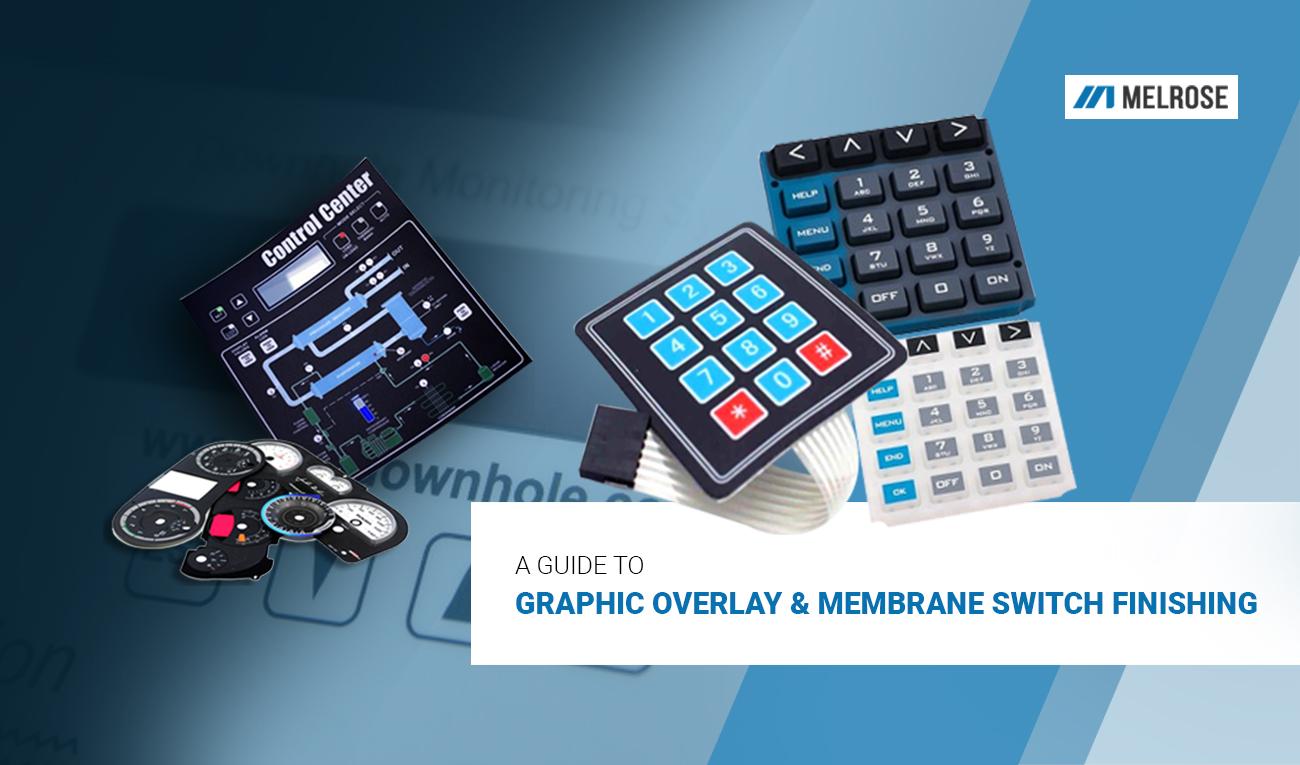A Guide to Graphic Overlay & Membrane Switch Finishing
May 24 '19
Die-cutting (Digital and Tooled)
Overlays, labels, and membrane switch layers (e.g., spacers, static layers, backside adhesives) thinner than .020″ are generally die-cut using steel rule dies, digital cutting methods, or class 1 die-sets. We usually cut thicker parts using digital routing, laser cutting, or water jet cutting technologies.
Cutting Tolerances:
+-.008″ is the standard tolerance for general steel rule die-cutting.
+-.003″ is the standard tolerance for hard tooling and with digital cutting methods.
Digital vs. Tooled Cutting Tradeoffs
For orders with limited amounts of cutting and where the likelihood of reorders is low, the digital cutting may be the best alternative.
Digital cutting methods
1) require no tooling investment,
2) have a quicker production set-up time than cutting with a steel rule die’s or class 1 hard tools,
3) do not incur a lead time delay while the tool is being built.
Cycle times are shorter using steel rule dies or class 1 hard tools.
Overlay Embossing
Melrose can emboss graphic overlays using a male/female die set. Features are typically raised .010″ (1.5x material thickness) if embossed.
Embossing is generally done to accentuate the key area of a graphics overlay or membrane switch. Key embossing can either be rim (perimeter) or pillow (pad).
Embossing may also be done to raise LED’s above the surface of an overlay or to provide a decorative effect to a logo, or copy. Braille can also be embossed.
Hydroforming is an alternative to embossing that involves more costly tooling, set-up, and cycle times. However, features heights up to three times the material thickness can be achieved if hydroformed (e.g., pillow or rim emboss heights of .021″ for a .007″ overlay are possible).
Graphic Overlays with LCD Windows
Graphic overlays are commonly provided with clear windows for viewing LCDs.
Overlays with LCD windows are produced using glass, hard-coated, scratch-resistant polyester, or polycarbonate.
Colors and window tints (if any) are the second surface printed (viewed through the plastic).
The 1st surface (top surface) is usually selectively textured using special inks in the areas where the LCD is not.
The LCD windows can be specified with alternative gloss levels (for glare attenuation), or with a window tint, with a selection of appropriate overlay background colors (generally dark colors).
The adhesive or spacer is selectively applied to the back of the overlay so as not to obscure the LCD viewing area, and to avoid the accumulation of debris.
Dead front windows are possible (windows that reveal printed graphics when illuminated by LED’s click here for details).
Graphic Overlays with LED Windows
We can produce graphic overlays with small clear round windows for viewing LED’s (light-emitting diodes).
These windows can be flush with the overlay surface or embossed to facilitate the LED’s being raised above the overlay surface (illumination is visible at a more acute angle than if flush-mounted).
As with LCD windows, LED windows can be tinted, or dead fronted.
The adhesive is excluded from the LED window to facilitate optimal light transmission, and avoid the accumulation of debris.
